5 Things to Look for When Choosing a Loading Conveyor Manufacturer
Discover how loading conveyor systems can triple your warehouse efficiency, dramatically reduce labor costs, and deliver ROI within months. TransfoDiscover the essential factors to evaluate when selecting a conveyor manufacturer for your warehouse. Find a reliable loading conveyor supplier with the expertise for your needs.rm your logistics operation today.
Selecting the right conveyor manufacturer is one of the most consequential decisions you’ll make for your logistics operation. These systems represent significant capital investments that will impact your workflow efficiency, operational costs, and bottom line for 5-10 years or more. With countless options in the market, from giant multinational corporations to specialized providers like Naili Conveyor, navigating this decision requires understanding the key factors that truly differentiate exceptional manufacturers from merely adequate ones.
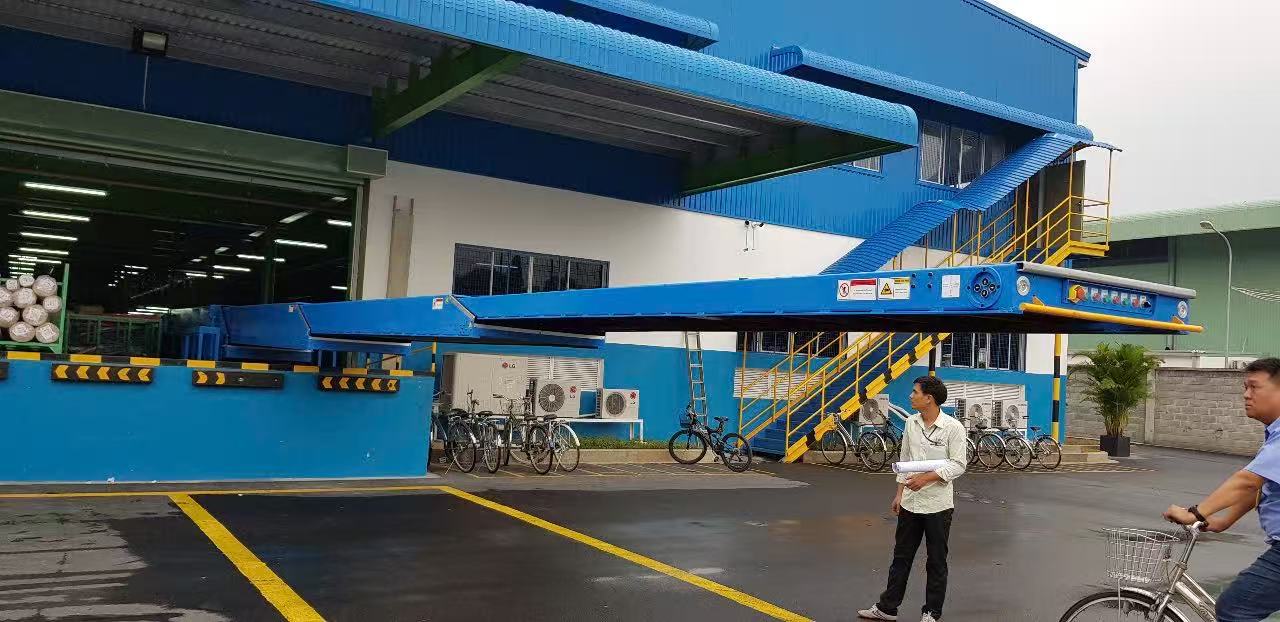

The conveyor equipment you select will become the backbone of your loading, unloading, and material handling processes. It will determine how quickly trucks can be turned around, how efficiently your staff can operate, and how flexibly your operation can adapt to changing requirements. Beyond the initial purchase, your relationship with the manufacturer will influence maintenance costs, system adaptability, and long-term operational success.
This article explores the five critical factors that should guide your evaluation of potential loading conveyor partners, with insights into why these criteria matter and how they should shape your final decision.
Criterion 1: Specialized Focus vs. Generalist
When evaluating conveyor manufacturers, one of the first distinctions to consider is whether the company is a specialized provider focused on specific conveyor applications or a generalist offering a broad range of material handling equipment.
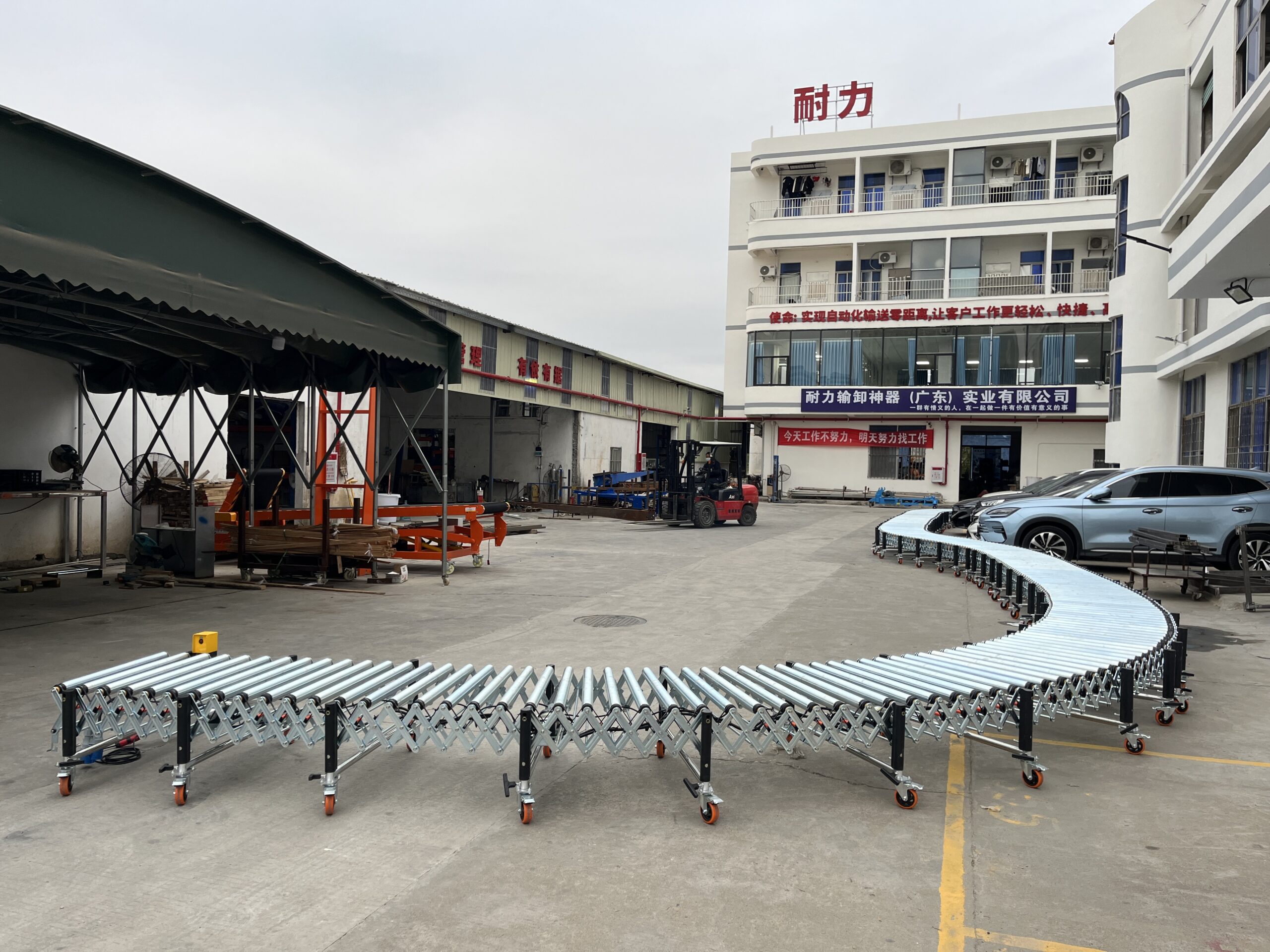

Why a specialist in loading/unloading conveyors matters
Specialized conveyor systems manufacturers like Naili Conveyor bring focused expertise that generalists often cannot match:
- Deep application knowledge: Manufacturers that focus exclusively on loading and unloading applications understand the unique challenges these operations face. They’ve encountered and solved the specific problems you’re likely to encounter, from truck height variations to load stability issues during transfer.
- Purpose-built designs: Specialists develop equipment specifically optimized for loading efficiency, rather than adapting general-purpose conveyors. This results in features that directly address loading challenges, like the telescoping functionality in extendable conveyors or hydraulic height adjustment for varying truck beds.
- Nuanced recommendations: A specialized manufacturer can recommend precisely which conveyor type best suits your specific loading scenario. For example, Naili can advise whether your operation would benefit more from a telescopic conveyor for high-volume dedicated docks or a hydraulic conveyor for locations without fixed docks.
- Targeted innovation: Companies focused solely on loading applications continuously refine their products based on feedback from similar operations to yours. Their product development addresses the exact pain points you experience rather than being diluted across dozens of conveyor applications.
While generalist manufacturers may offer a wider product range, they often lack the depth of experience in specific applications. For loading operations, where efficiency directly impacts shipping timelines and labor costs, the specialized knowledge of a focused manufacturer typically delivers better long-term value.
Criterion 2: Build Quality and Materials
The true cost of conveyor ownership extends far beyond the initial purchase price. Systems constructed with inferior materials or cutting corners on critical components will require more frequent repairs, experience more downtime, and ultimately need replacement sooner.
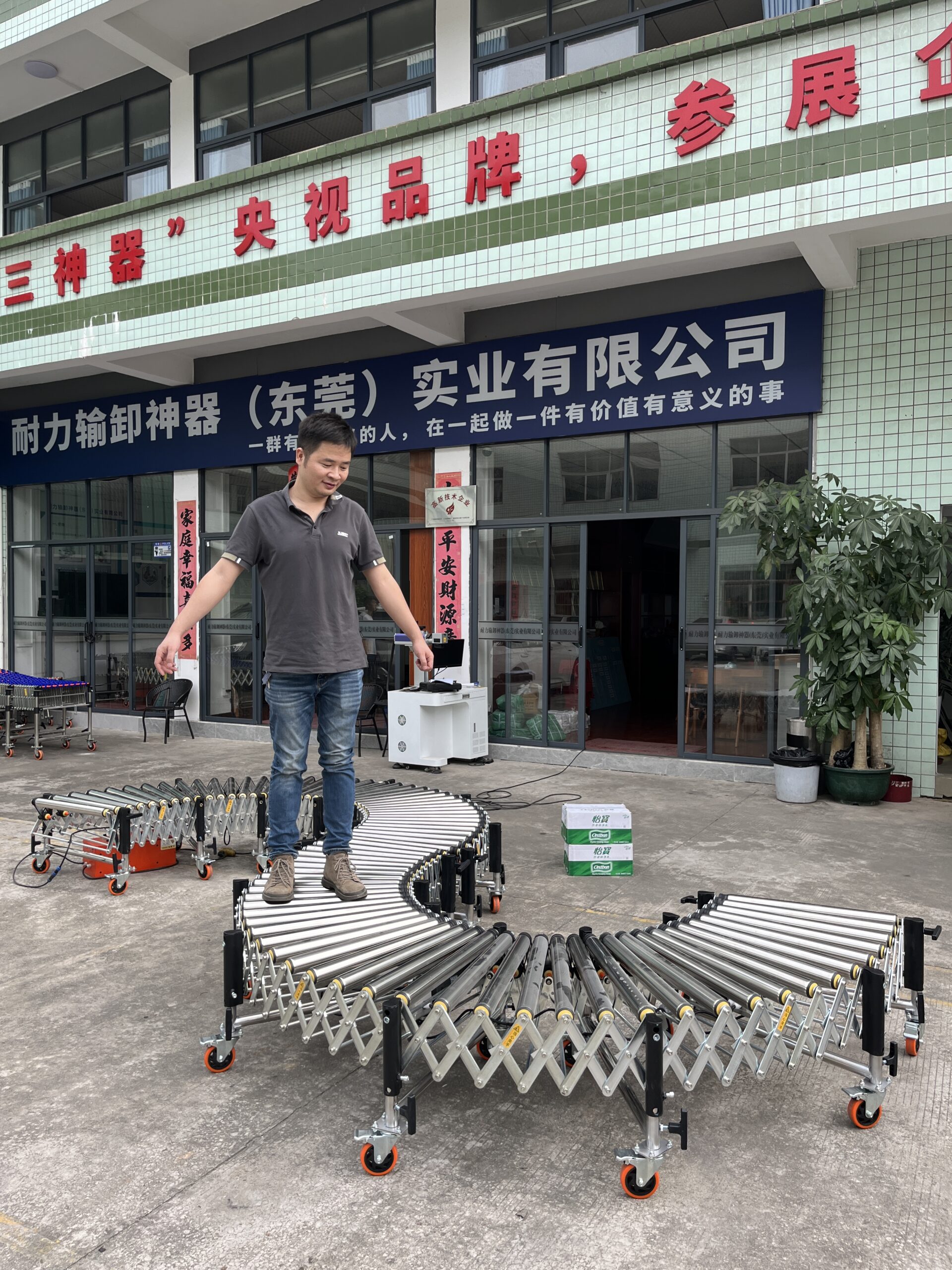

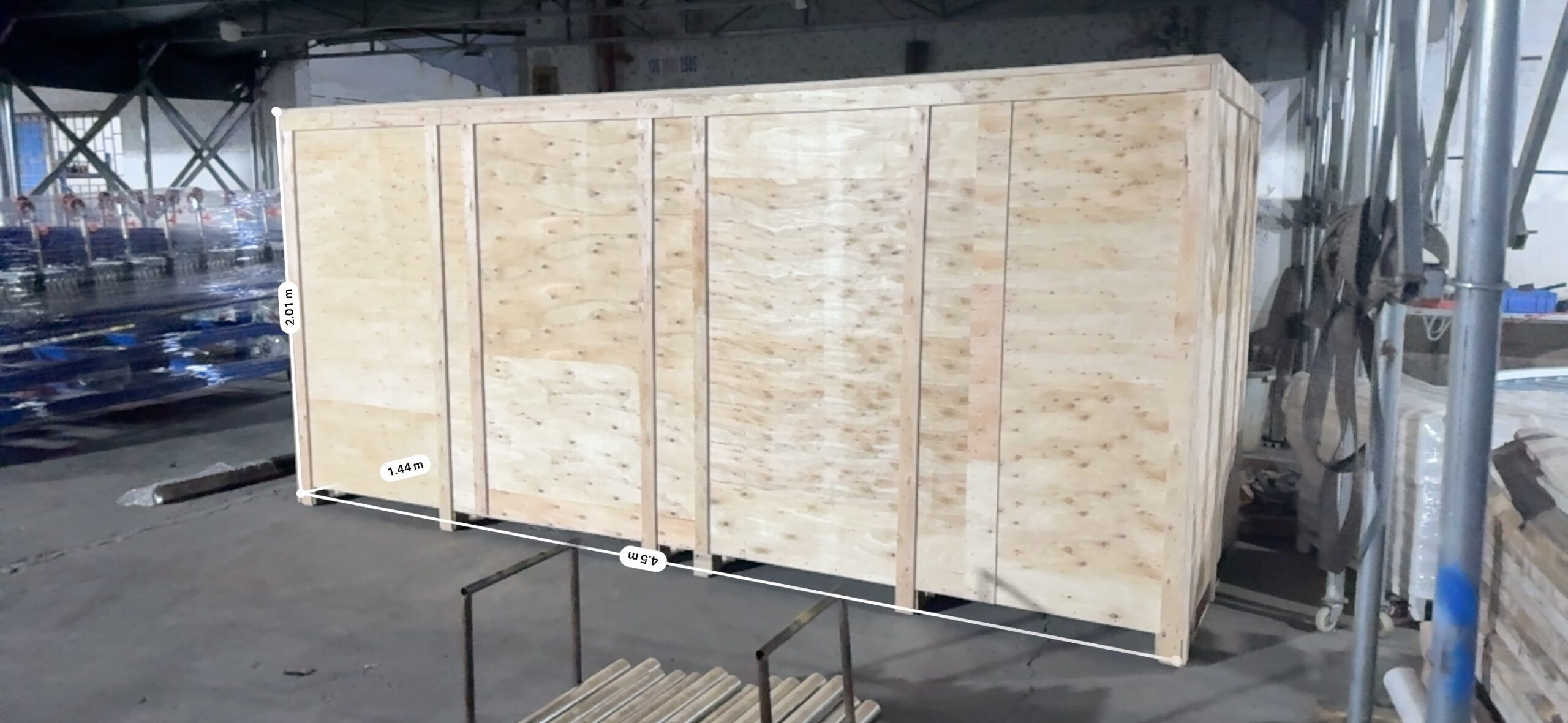

What to look for: steel thickness, quality of rollers, motors, and belts
When evaluating build quality, pay close attention to:
Frame construction:
- Steel thickness (Naili uses ≥3.5mm Q345 steel for equipment frames)
- Welding quality and consistency
- Surface treatment for corrosion resistance
- Load rating certifications
Roller specifications:
- Diameter and wall thickness (Naili’s powered rollers use 50mm diameter, ≥1.5mm thickness)
- Bearing quality and sealing against contaminants
- Surface treatment (zinc-plated/stainless options for different environments)
Drive systems:
- Motor brands and specifications (Naili uses recognized brands like Taibang and Naixin)
- Reducer quality and duty ratings (120W reducers in powered roller conveyors)
- Belt materials and wear resistance (PVC 5.0mm black grass pattern anti-slip belts for hydraulic conveyors)
Control components:
- Quality of electrical components (Naili uses domestic brand contactors with appropriate protections)
- Circuit protection implementations
- Control interface durability
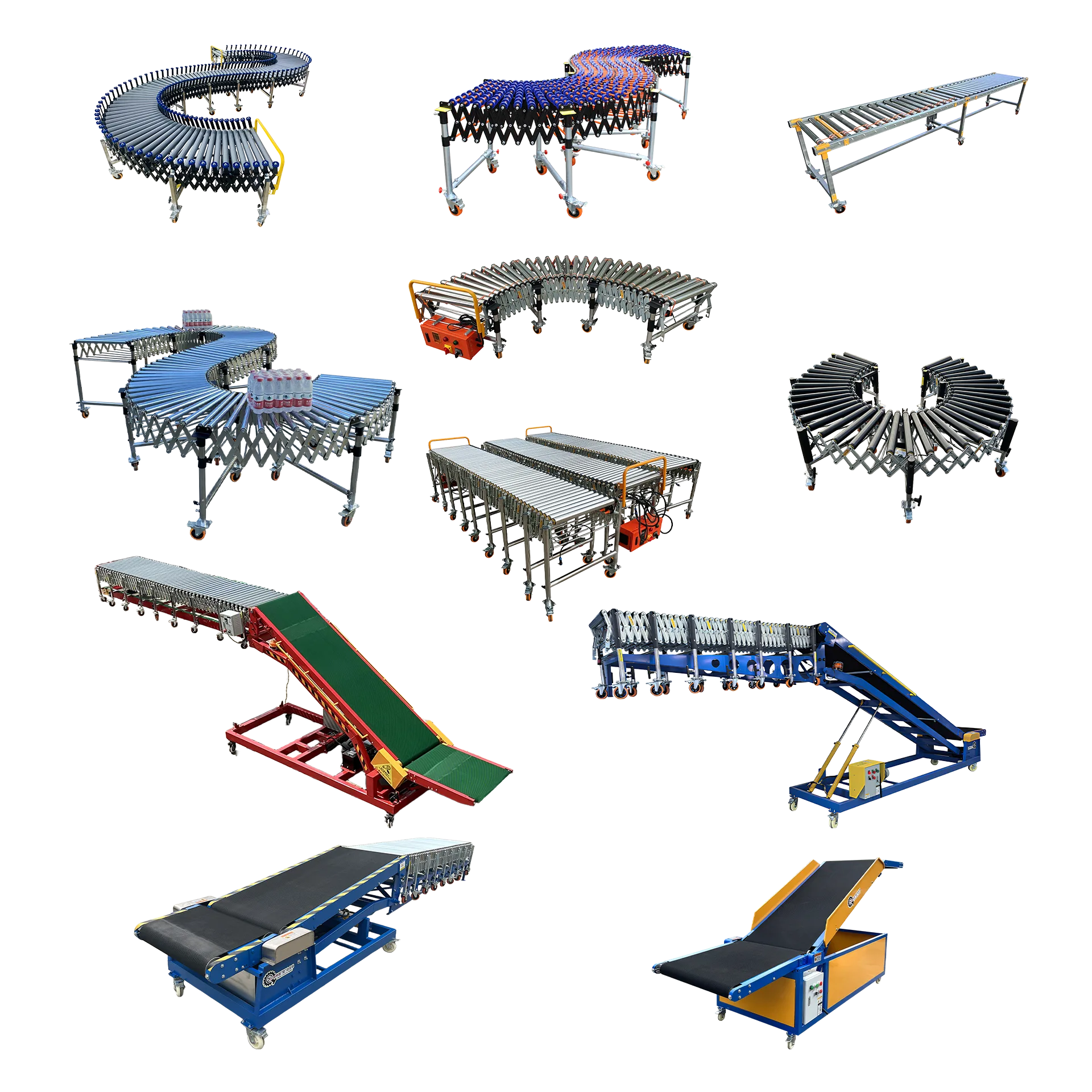

Naili’s commitment to robust materials
Naili Conveyor demonstrates their quality commitment through specific material choices documented in their specifications:
- Their telescopic conveyors use seamless steel pipe with wall thickness ≥6mm for drive rollers
- Support structures utilize BS700 or T700 and above steel plate with precision manufacturing
- Hydraulic systems employ SAE Standard double-layer fiber hydraulic pipes with 53 MPa pressure resistance
- Powered roller conveyors feature 201 stainless steel support frames for durability and corrosion resistance
This attention to material quality translates directly to longer service life. Under normal operating conditions, Naili’s equipment typically provides 5-10+ years of reliable service, representing significant value over cheaper alternatives that might require replacement in 2-3 years.
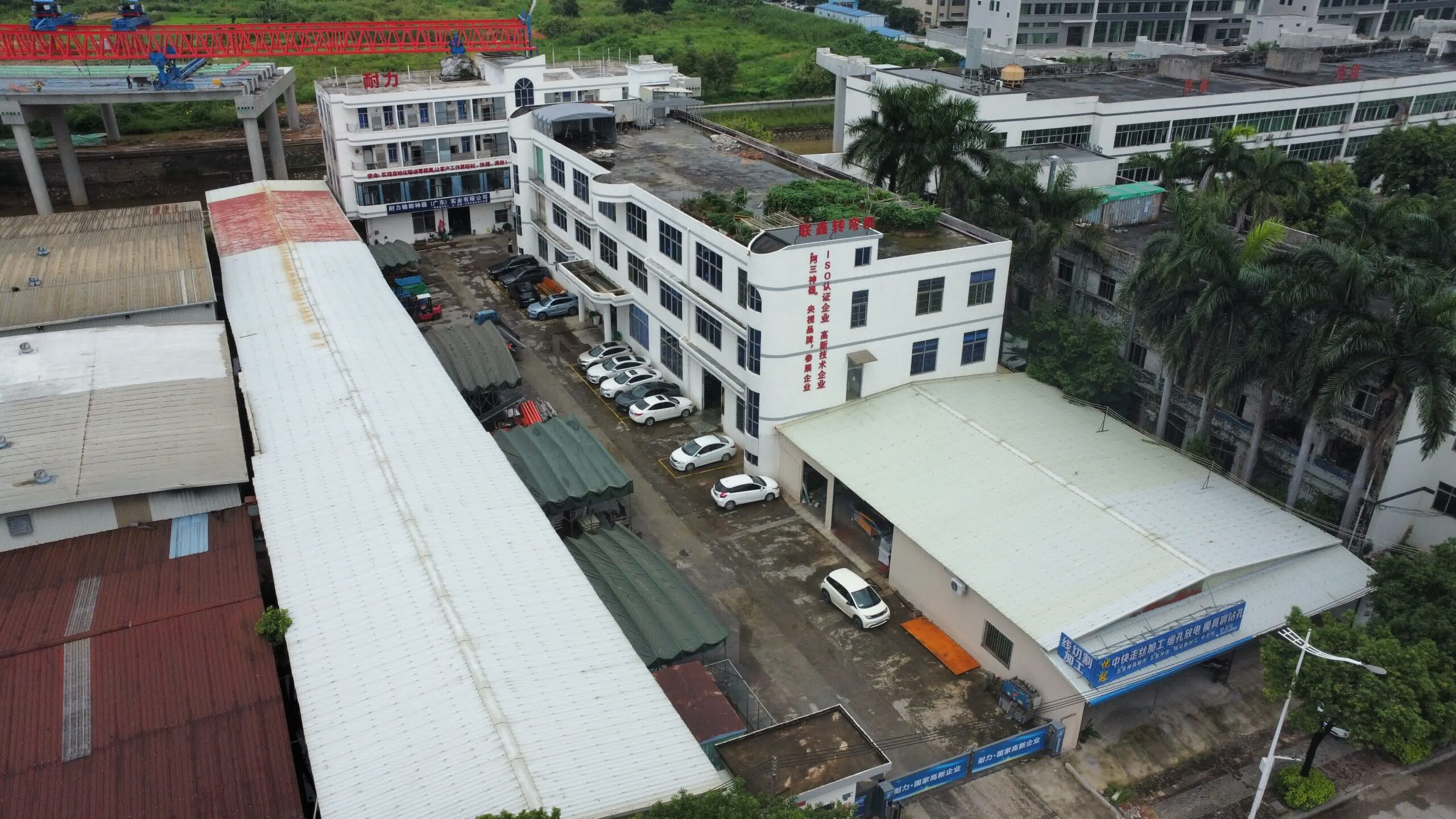

Criterion 3: Customization and Modularity
Loading operations vary tremendously across different industries, facility layouts, and workflow requirements. The ability to customize conveyor systems to your specific needs—and to adapt them as those needs evolve—can dramatically impact long-term value.
Can they provide a system that fits YOUR space and workflow?
Key customization capabilities to evaluate include:
Dimensional flexibility:
- Width options to match your typical package sizes (Naili offers 500/600/800mm options)
- Length adjustability to fit your available space
- Height adjustment ranges to accommodate your trucks and workflows
Performance customization:
- Speed control capabilities (Naili systems offer 0-40 m/min adjustability)
- Load capacity options to match your products
- Power supply compatibility with your facility (220V/380V options)
Environmental adaptations:
- Indoor/outdoor compatibility
- Material options for special conditions (stainless steel for moisture exposure)
- Temperature tolerance ranges
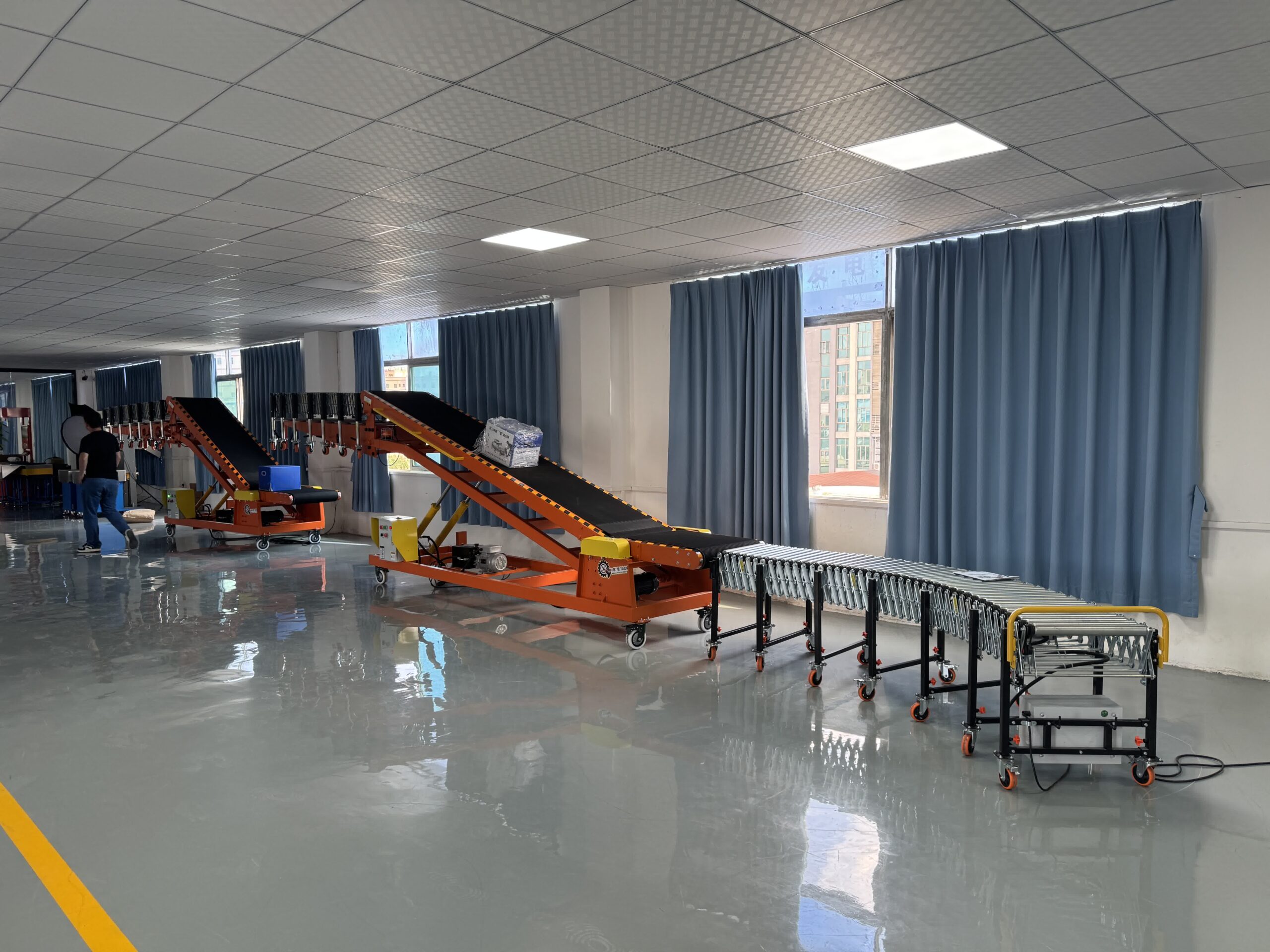

Naili’s modular approach: connecting different conveyor types
What sets exceptional industrial conveyor companies apart is their approach to modularity. Naili’s system design exemplifies this philosophy through several key features:
Cross-compatible connections:
- Hydraulic conveyors (except Micro model) feature support brackets specifically designed to accommodate roller conveyors
- The Medium model supports up to 10 meters of roller extensions, while the Large model supports up to 12 meters
- Multiple powered roller sections can be connected and controlled from a single control box
Mix-and-match capabilities:
- Gravity roller conveyors can be paired with hydraulic conveyors to reach deep into trucks
- Powered roller conveyors can connect to existing warehouse systems
- Various roller types (gravity, powered, skate wheel) can be integrated based on specific needs
Important compatibility notes:
- While many combinations are possible, certain limitations exist—for example, telescopic conveyors cannot be used together with hydraulic conveyors
- Specific conveyor types are recommended for certain loads (e.g., 20kg+ bagged goods require powered rubber roller conveyors)
This modularity allows you to start with a basic system and expand it over time, or to reconfigure your existing equipment as operational needs change—providing significantly better long-term value than rigid, single-purpose systems.
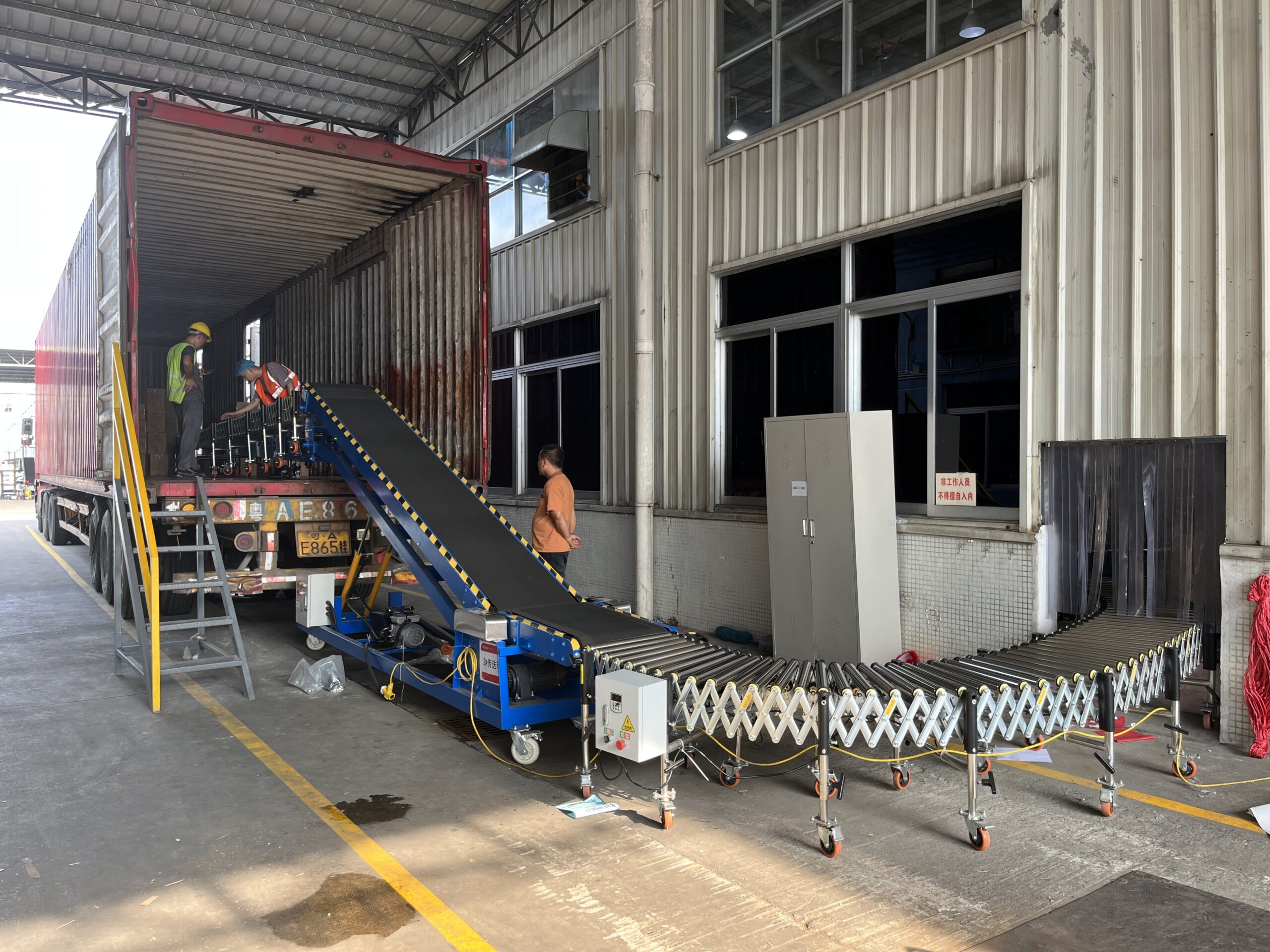

Criterion 4: After-Sales Support and Spare Parts
Even the highest quality conveyor systems require maintenance, adjustments, and occasionally, repairs. The manufacturer’s approach to after-sales support can be the difference between minor inconvenience and costly operational disruptions.
What happens when something breaks? Do they have parts available?
When evaluating after-sales support, consider these critical factors:
Warranty coverage:
- Duration and scope (Naili offers 12-month frame warranties and 6-month belt warranties)
- What’s included vs. excluded
- Process for warranty claims
Spare parts availability:
- Stock levels of common wear items
- Lead times for replacement components
- Compatibility with older system versions
Technical support:
- Availability of technical assistance
- Quality of documentation provided
- Training for your maintenance team
Maintenance guidance:
- Preventive maintenance schedules and recommendations
- Troubleshooting guides for common issues
- Self-service repair documentation
Naili Conveyor’s approach to after-sales support includes comprehensive installation guidance, detailed operation videos, and clear maintenance instructions. Their documentation specifically addresses common maintenance needs such as motor and belt replacement procedures, providing step-by-step guidance for routine service tasks.
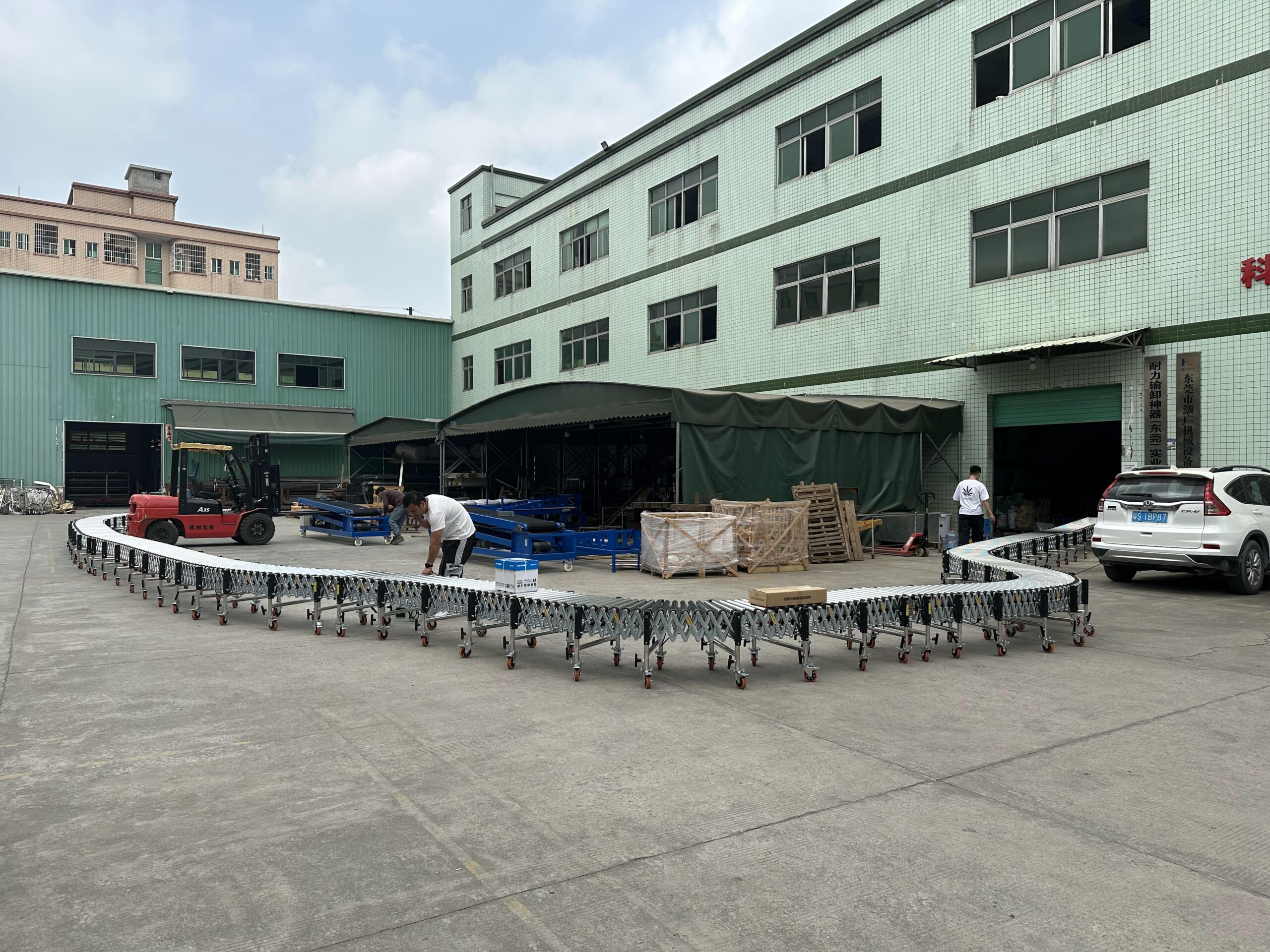

For conveyor systems, the most frequent maintenance needs involve drive belts and electrical components. A manufacturer that makes these parts readily available and provides clear guidance for replacement minimizes your downtime when issues arise. Always verify that your potential supplier maintains adequate stock of these critical components.
Criterion 5: Proven Track Record and Expertise
Past performance remains one of the best predictors of future reliability. A manufacturer’s history of successful implementations, depth of product knowledge, and industry expertise provide valuable insights into the experience you can expect.
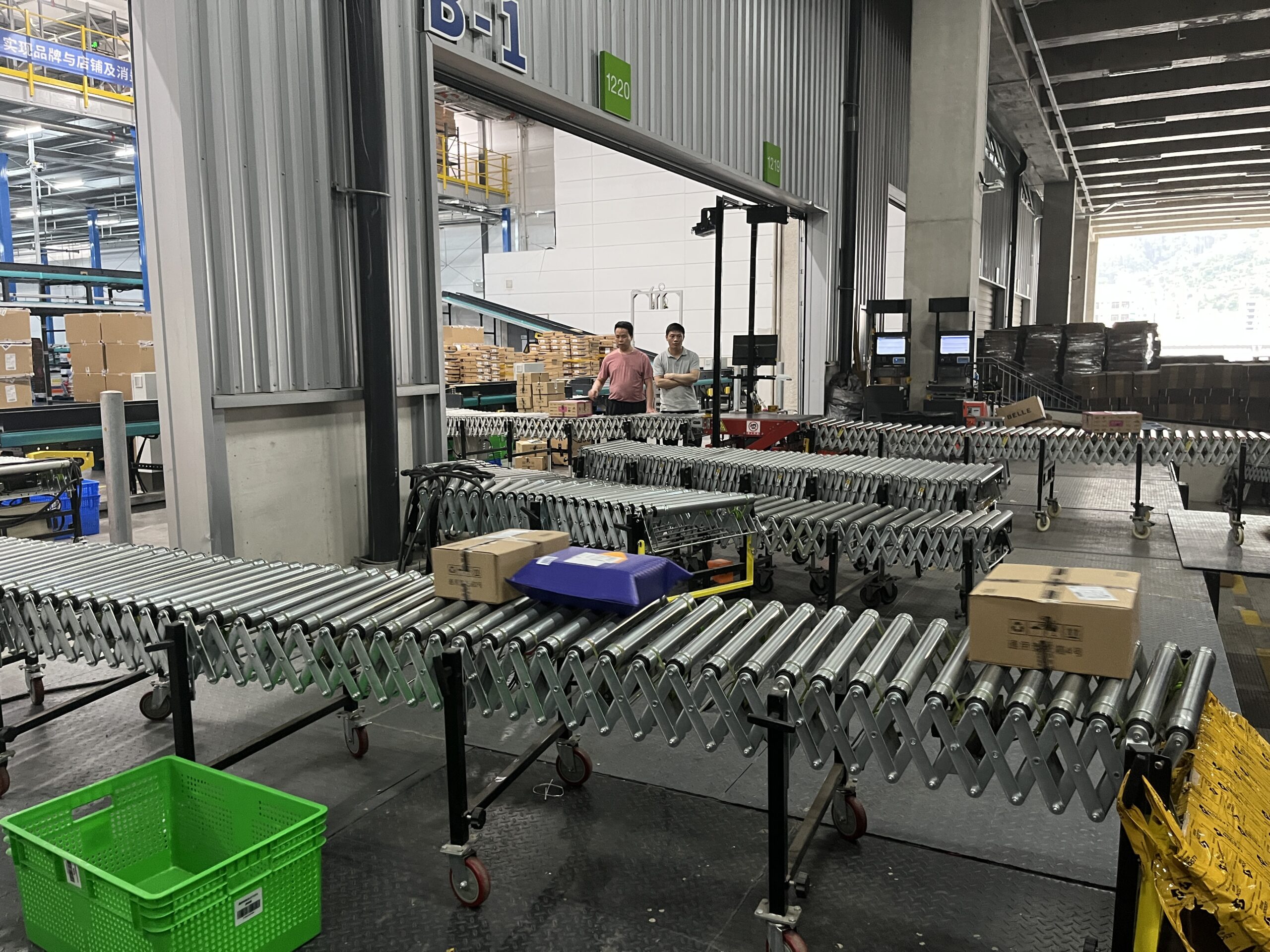

Look for case studies, testimonials, and detailed product knowledge
When evaluating a conveyor manufacturer’s expertise, look beyond marketing materials to assess:
Depth of technical documentation:
- Detailed specifications that demonstrate deep product understanding
- Clear explanation of operational principles and limitations
- Transparent discussion of both advantages and disadvantages
Application-specific knowledge:
- Recommendations tailored to specific industries and use cases
- Understanding of unique challenges in different loading scenarios
- Ability to recommend optimal solutions for various operational needs
Product evolution evidence:
- Improvements made based on customer feedback
- Refinements to address common pain points
- Adaptation to changing industry requirements
Naili Conveyor demonstrates their expertise through comprehensive product documentation that includes detailed specifications, clear operational guidance, and specific application recommendations. Their materials reflect a nuanced understanding of loading challenges, with product designs that specifically address these needs.
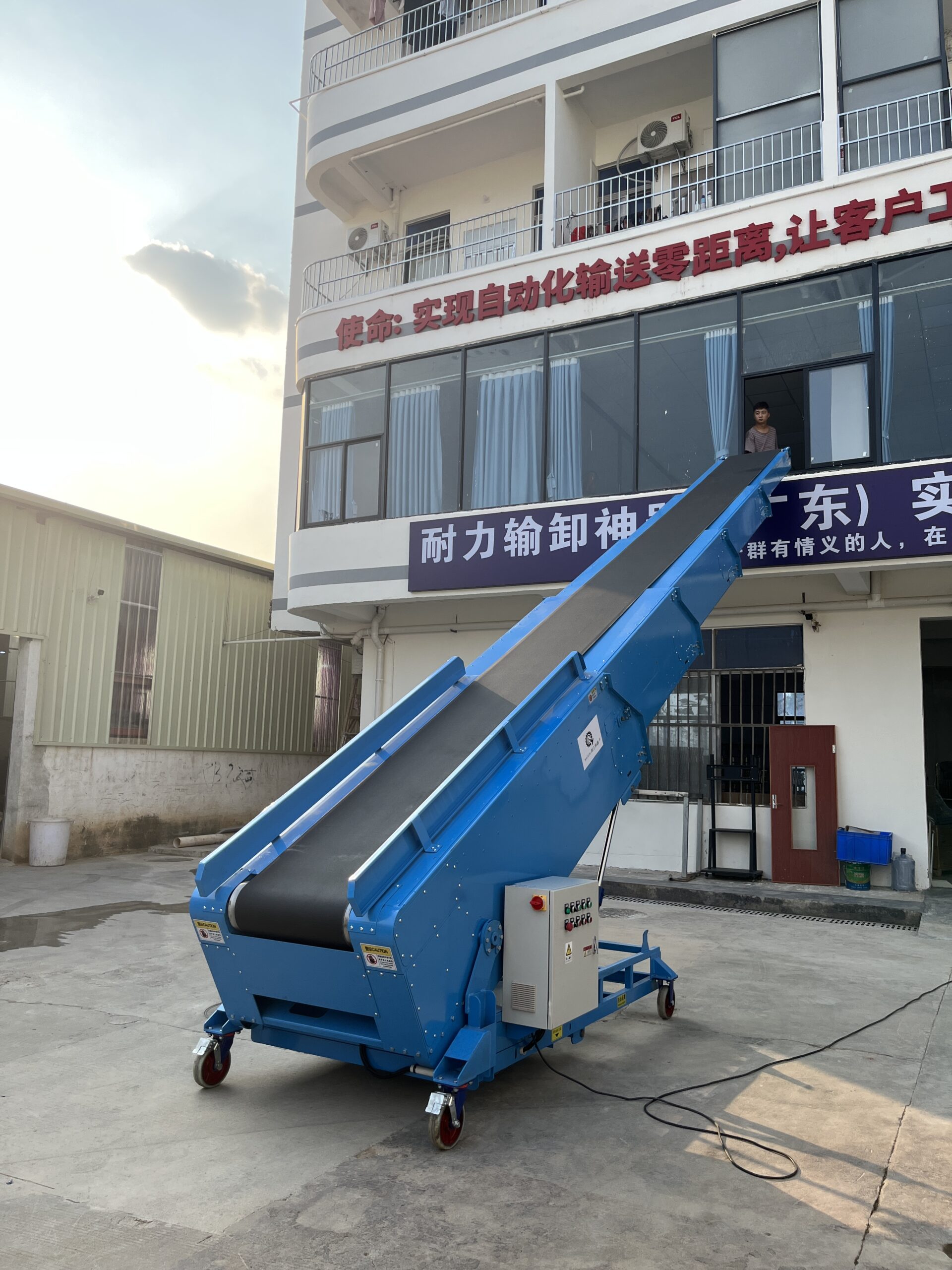

For example, their hydraulic conveyor documentation acknowledges both advantages (height adjustability, strong friction) and limitations (electrical requirements, maintenance needs), demonstrating a transparent approach that builds trust. This balanced perspective indicates a manufacturer that understands their products’ real-world performance rather than simply promoting idealized capabilities.
Why Naili Conveyor is the Right Partner for Your Needs
Selecting the right conveyor systems manufacturer requires balancing multiple factors, from product quality and customization capabilities to after-sales support and proven expertise. As a specialized provider focused exclusively on loading and unloading applications, Naili Conveyor offers distinct advantages for warehouse and logistics operations.
Their specialized focus on loading & unloading equipment ensures that every product feature is optimized specifically for the challenges these applications face. From the extending sections of their telescopic conveyors to the height-adjustable hydraulic systems, each design element addresses common loading efficiency barriers.
The company’s commitment to quality materials—from high-grade steel frames to precision manufacturing processes—translates to equipment with 5-10+ year operational lifespans. This longevity, combined with comprehensive warranty coverage, provides exceptional long-term value despite potentially higher initial investments than budget alternatives.
Naili’s modular design philosophy allows operations to configure precisely the right system for their specific needs, with the flexibility to adapt as those needs evolve. The ability to connect different conveyor types, adjust lengths and heights, and easily relocate equipment creates versatility that fixed systems cannot match.
Whether you’re equipping a new facility or upgrading existing loading operations, choosing a manufacturer that excels in these five critical areas will significantly impact your long-term operational success. By prioritizing specialized expertise, build quality, customization options, after-sales support, and proven performance, you’ll select a conveyor partner that supports your operation for years to come.
Frequently Asked Questions
How long should a quality conveyor system last?
With proper maintenance and normal usage, a quality conveyor system should last 5-10 years or more. Naili’s products are designed for this longevity, with robust materials like high-grade steel frames, quality motors, and durable belts that withstand daily use in demanding environments.
What’s the typical warranty coverage for conveyor systems?
Industry standard warranties typically range from 6-12 months. Naili offers a 12-month warranty on conveyor frames and structural components, with a 6-month warranty on wear items like belts. Be wary of manufacturers offering unusually short warranties, as this often indicates lower quality expectations.
Can conveyor systems be expanded or modified after installation?
Quality modular systems certainly can. Naili’s design philosophy specifically enables future expansion, with compatible connections between different conveyor types and the ability to add sections as needed. When selecting a manufacturer, verify that their systems offer standardized connection points and expansion capabilities to protect your investment as needs change.
What maintenance is required for conveyor systems?
Regular maintenance typically includes: checking belt tension and condition (monthly), inspecting roller bearings (quarterly), lubricating moving parts (quarterly), and examining electrical connections (quarterly). Naili recommends inspecting all screws and connections every three months for systems that are frequently moved or extended. Check Hydraulic Conveyor Maintenance Manual and Flexible Roller Conveyor Maintenance Manual.
How do I determine which conveyor type is best for my operation?
The optimal conveyor depends on your specific operational context. Consider: whether you have fixed loading docks (telescopic conveyors excel here), if you need to accommodate varying truck heights (hydraulic conveyors are ideal), your typical package volumes and weights, available space, and budget constraints. A specialized manufacturer like Naili can provide tailored recommendations based on these factors.
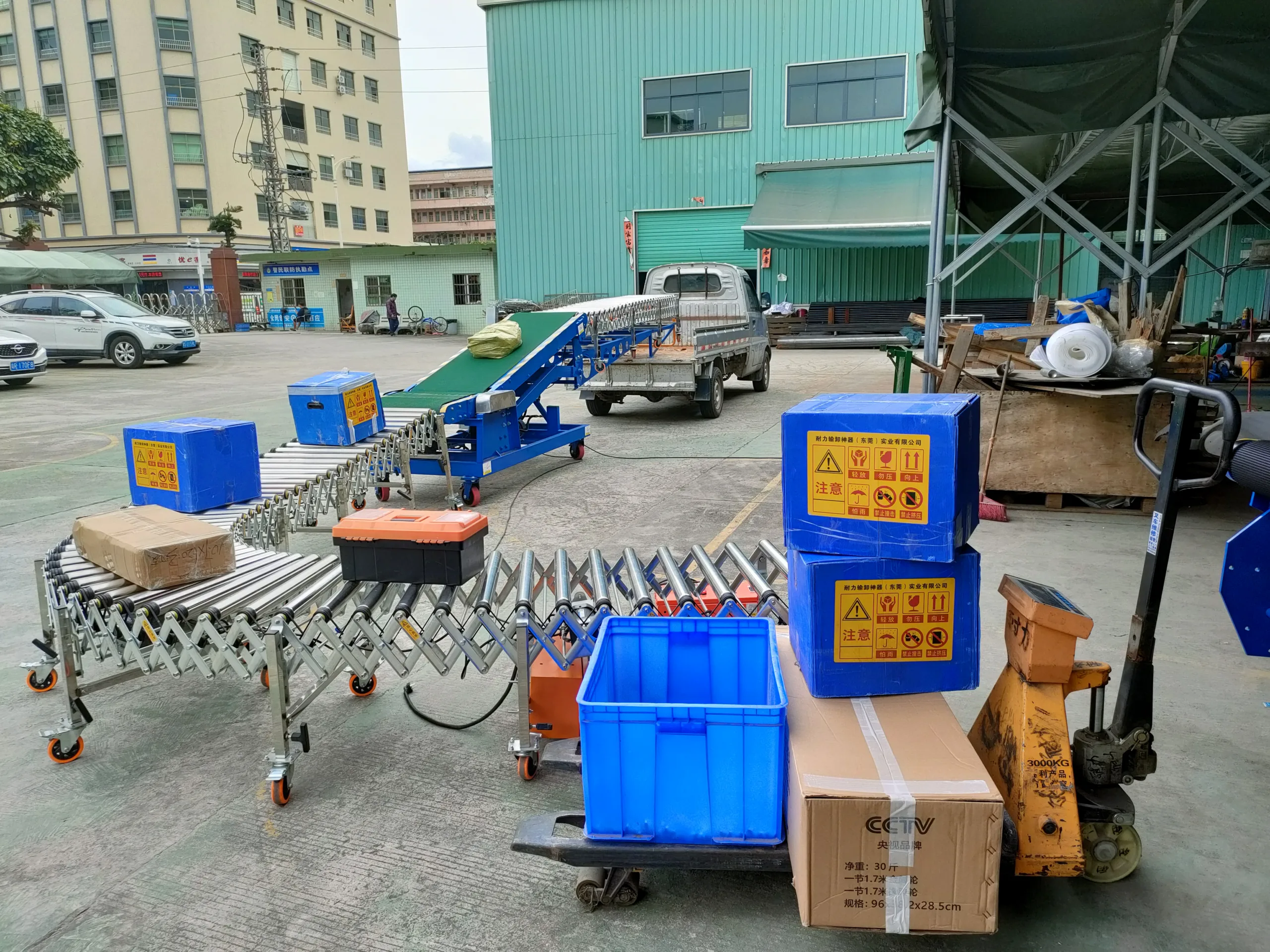

Table of Contents
Recent Posts
Optimize hardware store logistics with the right building supply conveyor systems. Our guide to tool distribution systems enhances retail warehouse automation for efficient operations.
Optimize your medical supply logistics with efficient gravity conveyor systems. Learn how to safely handle healthcare products while improving your hospital supply chain operations.
Discover how a sports equipment conveyor system can streamline your athletic gear logistics. Flexible conveyor solutions for all shapes and sizes of sporting goods.

